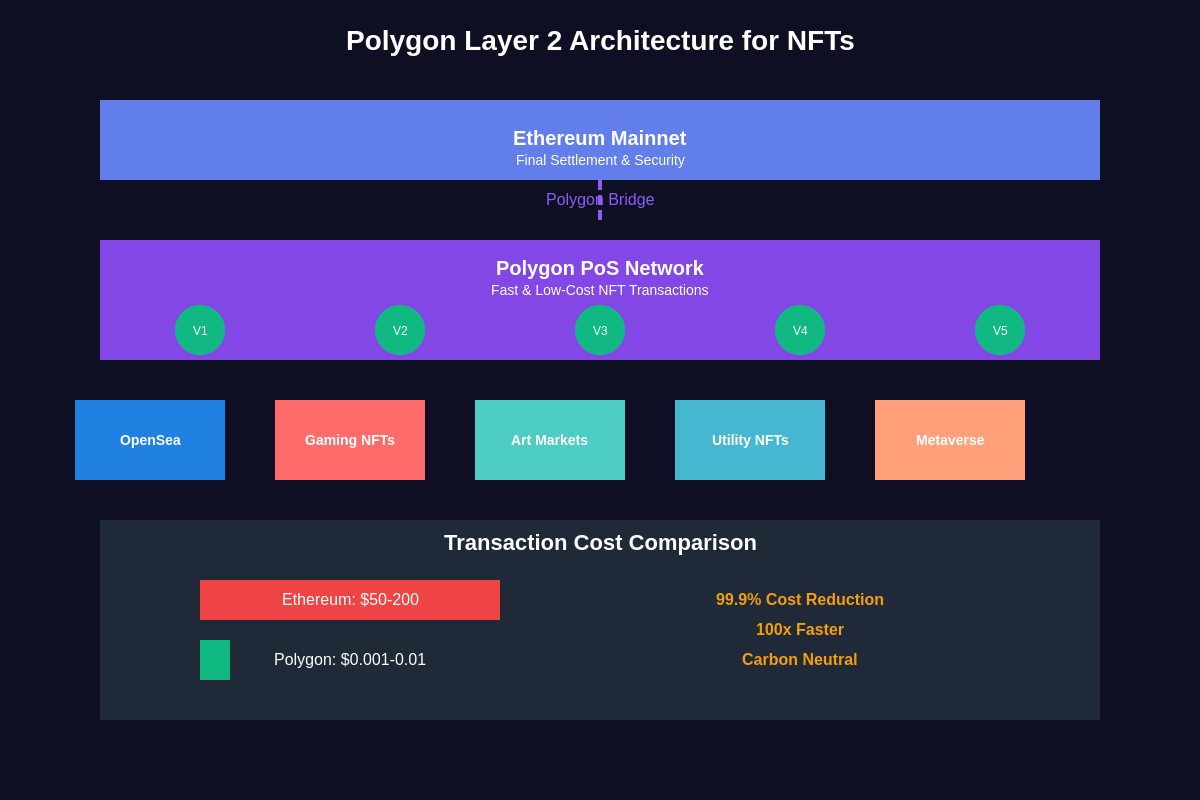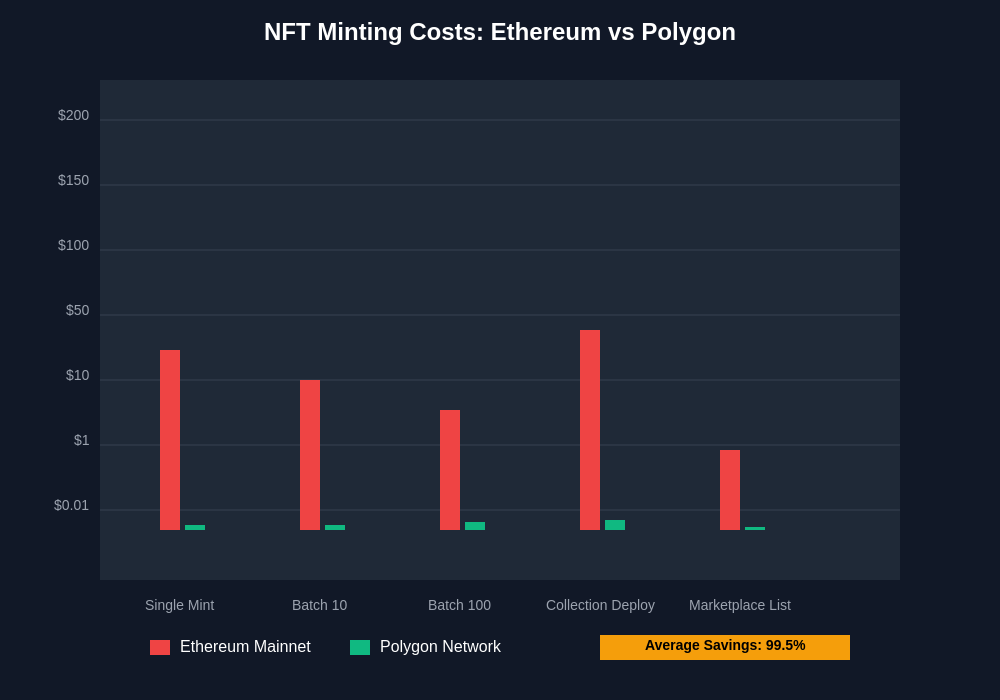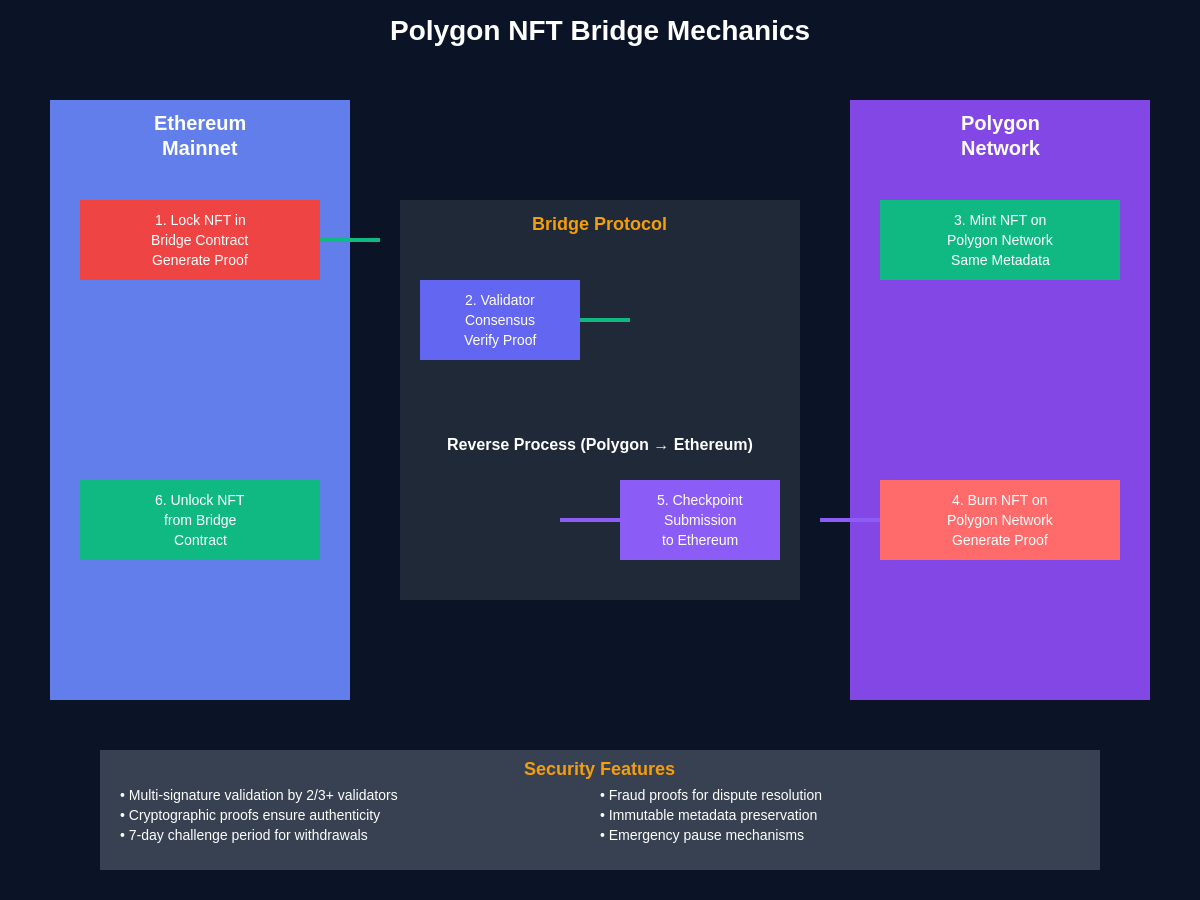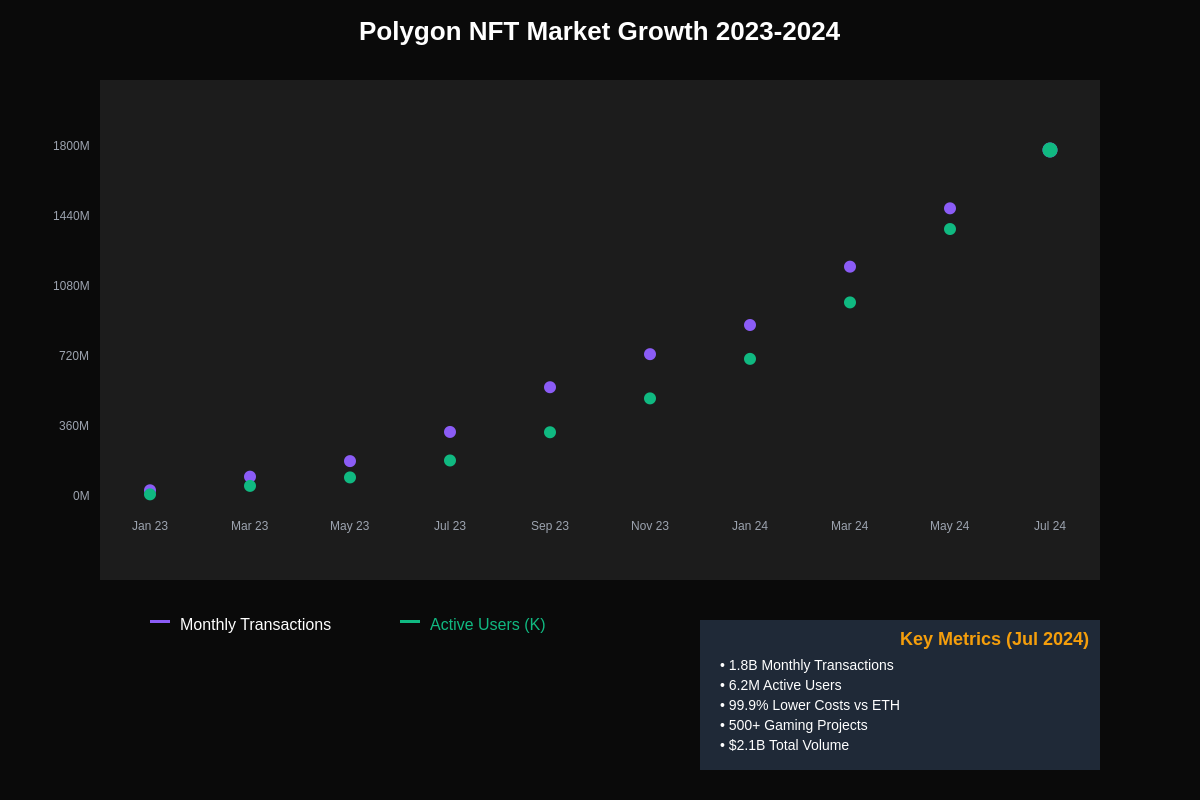Explore Polygon’s technical capabilities on TradingView to understand the ecosystem that’s revolutionizing NFT accessibility.
The Layer 2 Revolution in NFT Markets
Polygon has emerged as the dominant Layer 2 solution for NFT minting and trading, offering dramatically reduced transaction costs and faster confirmation times compared to Ethereum mainnet while maintaining full compatibility with existing Ethereum-based applications and infrastructure. This technological advancement has democratized access to NFT creation and trading, enabling artists, creators, and collectors to participate in the digital asset economy without the prohibitive gas fees that previously limited mainstream adoption.
The shift toward Layer 2 solutions represents a fundamental transformation in how NFTs are created, traded, and valued, with Polygon leading this transition through its unique combination of security, scalability, and ecosystem compatibility. Unlike other scaling solutions that require complex bridging mechanisms or compromise on security, Polygon’s approach provides seamless interoperability with Ethereum while offering transaction costs that are often 99% lower than mainnet alternatives.

Technical Architecture and Security Model
Polygon’s Layer 2 infrastructure operates through a sophisticated network of validators and checkpoints that ensure the security of NFT transactions while providing the scalability necessary for mass adoption. The network utilizes a Proof of Stake consensus mechanism with a robust validator set that processes transactions off-chain before periodically committing batches of transactions to the Ethereum mainnet through cryptographic proofs.
The security model for Polygon NFTs relies on several layers of protection including the underlying Ethereum blockchain security, Polygon’s own validator network, and smart contract-level protections that ensure NFT ownership and transfer records remain immutable and verifiable. This multi-layered approach provides NFT holders with confidence that their digital assets are protected by the same security guarantees as Ethereum mainnet while benefiting from improved performance and cost efficiency.
Smart contract deployment on Polygon follows the same standards as Ethereum, enabling developers to port existing NFT contracts with minimal modifications while taking advantage of reduced deployment and interaction costs. The ERC-721 and ERC-1155 standards are fully supported, ensuring compatibility with existing marketplaces, wallets, and infrastructure while enabling new use cases that were previously economically unfeasible on Ethereum mainnet.
Gas Fee Economics and Cost Analysis
The economic advantages of minting NFTs on Polygon are substantial, with typical transaction costs ranging from $0.001 to $0.01 compared to Ethereum mainnet fees that can exceed $50 during periods of network congestion. This dramatic reduction in costs has enabled new business models for NFT creators, including micro-transactions, gaming assets, utility tokens, and large-scale generative art projects that would be economically impossible on Ethereum mainnet.
Monitor real-time MATIC price movements and network activity to understand the relationship between network usage and transaction costs across different market conditions.
The cost structure of Polygon NFT operations includes not only the minting transaction fees but also considerations for marketplace listing fees, transfer costs, and smart contract interactions that collectively determine the total cost of ownership for NFT creators and collectors. Advanced users can optimize their gas usage through techniques such as batch minting, efficient contract design, and strategic timing of transactions during periods of lower network utilization.
Gas fee predictability on Polygon represents a significant advantage over Ethereum mainnet, where fee estimation can be challenging due to network congestion and MEV (Maximum Extractable Value) activities that can cause sudden spikes in transaction costs. Polygon’s more stable fee environment enables better planning for NFT projects and reduces the risk of failed transactions due to insufficient gas estimates.

Marketplace Ecosystem and Platform Integration
The Polygon NFT marketplace ecosystem has evolved rapidly to include major platforms such as OpenSea, Rarible, SuperRare, and specialized gaming marketplaces that leverage Polygon’s low-cost transactions to enable new forms of digital asset trading. These platforms have implemented seamless bridging mechanisms that allow users to move NFTs between Polygon and Ethereum mainnet while maintaining ownership records and transaction history.
Gaming-focused NFT marketplaces have particularly benefited from Polygon’s infrastructure, enabling in-game asset trading, character upgrades, and virtual land transactions that require frequent, low-value transactions that would be prohibitively expensive on Ethereum mainnet. Popular blockchain games such as Aavegotchi, Decentraland, and The Sandbox have built substantial portions of their economies on Polygon’s infrastructure.
Creator-focused platforms have emerged to take advantage of Polygon’s accessibility, offering tools for artists to mint collections, set up royalty structures, and engage with collectors without the financial barriers associated with Ethereum mainnet. These platforms often provide additional services such as metadata hosting, collection management, and promotional tools that help creators build sustainable businesses around their NFT projects.
The integration of social features and community building tools within Polygon-based marketplaces has created more engaging experiences for collectors and creators, with features such as creator profiles, collection following, and social trading that leverage the low-cost transaction environment to enable frequent interactions and community engagement.
Cross-Chain Compatibility and Bridge Technology
Polygon’s approach to cross-chain compatibility centers on its native bridge infrastructure that enables secure and efficient transfer of NFTs between Polygon and Ethereum mainnet while preserving all metadata, ownership history, and smart contract functionality. The bridge technology utilizes cryptographic proofs and validator consensus to ensure that cross-chain transfers maintain the same security guarantees as native transactions on either network.
The technical implementation of cross-chain NFT transfers involves sophisticated mechanisms for handling metadata synchronization, ownership verification, and smart contract state management across different blockchain environments. Users can seamlessly move their NFTs between networks based on their specific needs, such as taking advantage of Ethereum mainnet’s liquidity for high-value sales while using Polygon for regular trading and interaction activities.
Third-party bridge solutions and multi-chain wallet integration have further enhanced the user experience for cross-chain NFT management, with tools that automatically optimize transaction routing based on cost, speed, and security requirements. These solutions abstract away much of the technical complexity associated with cross-chain operations while providing users with transparency and control over their asset management strategies.
The development of cross-chain metadata standards and interoperability protocols has enabled more sophisticated NFT use cases that span multiple blockchain networks, including gaming assets that can be used across different games and platforms, utility tokens that provide access to services on multiple networks, and collectibles that can be displayed and traded across various marketplaces and virtual environments.

Developer Tools and Smart Contract Deployment
The developer ecosystem surrounding Polygon NFTs includes comprehensive tooling for smart contract development, testing, and deployment that leverages existing Ethereum development frameworks while providing optimizations specific to Polygon’s architecture. Popular development frameworks such as Hardhat, Truffle, and Remix work seamlessly with Polygon networks, enabling developers to deploy and test NFT contracts using familiar tools and workflows.
Smart contract deployment on Polygon benefits from reduced testing costs, enabling developers to conduct more thorough testing and iteration cycles without the financial constraints associated with Ethereum mainnet development. This improved development environment has led to more innovative and complex NFT contract designs, including dynamic NFTs that evolve over time, utility-based tokens with complex interaction mechanics, and gaming assets with sophisticated state management systems.
The Polygon development community has created specialized libraries and tools for common NFT use cases, including batch minting utilities, royalty management systems, whitelist and presale mechanisms, and integration tools for popular marketplaces and wallet providers. These resources significantly reduce the time and complexity required to launch successful NFT projects while ensuring adherence to best practices for security and user experience.
Documentation and educational resources for Polygon NFT development have matured to include comprehensive guides, code examples, and community support that help both experienced blockchain developers and newcomers to understand the nuances of Layer 2 development and the specific advantages of building on Polygon’s infrastructure.
Gaming and Utility NFT Applications
Gaming represents one of the most successful applications of Polygon’s NFT infrastructure, with the low transaction costs enabling frequent asset trades, character upgrades, and in-game economy interactions that form the foundation of play-to-earn gaming models. Analyze gaming token performance and market trends to understand the broader ecosystem driving Polygon NFT adoption.
The technical requirements for gaming NFTs include fast transaction processing, reliable state updates, and seamless integration with game engines and platforms, all areas where Polygon’s architecture provides significant advantages over other blockchain solutions. Game developers can implement complex economic systems with multiple asset types, upgrade mechanisms, and player-to-player trading without worrying about transaction costs limiting player engagement or game mechanics.
Utility NFTs on Polygon extend beyond gaming to include membership tokens, access passes, certification systems, and identity verification mechanisms that benefit from the platform’s low-cost transaction environment. These applications often require frequent updates, transfers, and interactions that would be economically unfeasible on higher-cost blockchain networks while still maintaining the security and immutability guarantees that make NFTs valuable for utility applications.
The development of standards for interoperable gaming assets and utility tokens has enabled more sophisticated use cases where single NFTs can provide functionality across multiple games, platforms, or services, creating new forms of digital asset value that extend beyond traditional collectible or artistic applications.
Environmental Impact and Sustainability
Polygon’s Proof of Stake consensus mechanism provides significant environmental advantages compared to Proof of Work blockchains, with energy consumption per transaction that is orders of magnitude lower than Bitcoin or pre-merge Ethereum. This environmental efficiency has become increasingly important for NFT creators and collectors who are concerned about the carbon footprint of their digital asset activities.
The network’s commitment to carbon neutrality and sustainability initiatives has included investments in renewable energy projects, carbon offset programs, and research into even more energy-efficient blockchain technologies. These efforts address one of the primary criticisms of NFT technology while maintaining the security and decentralization properties that make blockchain-based digital assets valuable.
Environmental impact calculations for Polygon NFTs show dramatically lower carbon footprints compared to Ethereum mainnet alternatives, with typical NFT minting and trading activities consuming less energy than traditional web browsing or email usage. This sustainability profile has attracted environmentally conscious creators and institutions that want to participate in the NFT economy without contributing to environmental degradation.
The broader environmental implications of Layer 2 solutions like Polygon extend beyond individual transaction efficiency to include reduced overall network congestion, more efficient resource utilization, and the enabling of use cases that can provide environmental benefits through improved coordination, verification, and incentive alignment in sustainability-focused applications.
Institutional Adoption and Enterprise Use Cases
Enterprise adoption of Polygon NFTs has accelerated as organizations recognize the practical benefits of reduced transaction costs, predictable fee structures, and reliable performance characteristics that support business-critical applications. Major brands and corporations have launched NFT projects on Polygon to take advantage of the platform’s scalability while maintaining compatibility with existing Ethereum-based infrastructure and user bases.
The institutional use cases for Polygon NFTs span multiple industries including supply chain management, digital identity verification, intellectual property protection, and customer loyalty programs that benefit from the unique properties of NFT technology combined with Polygon’s economic and technical advantages. These applications often require high transaction volumes and frequent updates that make Ethereum mainnet impractical while still requiring the security and immutability guarantees that blockchain technology provides.
Compliance and regulatory considerations for institutional NFT adoption have been addressed through Polygon’s focus on transparency, auditability, and integration with existing financial and legal frameworks. The platform’s compatibility with Ethereum standards ensures that institutional users can leverage existing compliance tools and procedures while benefiting from improved cost and performance characteristics.
The development of enterprise-grade tools and services for Polygon NFT management has included custody solutions, batch processing systems, reporting and analytics platforms, and integration APIs that enable seamless incorporation of NFT functionality into existing business processes and systems.
Security Considerations and Best Practices
Security best practices for Polygon NFTs encompass multiple layers including smart contract security, wallet management, marketplace interaction protocols, and cross-chain transfer procedures that require careful attention to prevent loss or theft of digital assets. The lower transaction costs on Polygon enable more frequent security practices such as regular asset movement, multi-signature confirmations, and testing transactions that would be prohibitively expensive on Ethereum mainnet.
Smart contract security on Polygon follows the same principles as Ethereum development but benefits from reduced testing costs that enable more thorough security auditing and penetration testing during the development process. Common vulnerabilities in NFT contracts such as reentrancy attacks, access control issues, and metadata manipulation risks can be more cost-effectively tested and mitigated on Polygon’s infrastructure.
Wallet security considerations for Polygon NFTs include proper key management, hardware wallet integration, and understanding the risks associated with cross-chain operations and bridge technology. Users must be particularly careful when interacting with bridge contracts and third-party services that facilitate cross-chain transfers, as these operations introduce additional attack vectors and complexity compared to single-chain NFT management.
The security model for Polygon’s consensus mechanism and validator network provides strong guarantees for NFT ownership and transfer records, but users should understand the trade-offs involved in Layer 2 solutions and the importance of the underlying Ethereum security for final settlement and dispute resolution.
Market Performance and Trading Analytics
Market performance analysis of Polygon NFTs reveals significant growth in both transaction volume and user adoption, with the platform consistently ranking among the top networks for NFT activity based on transaction count, unique users, and total value transferred. Track comprehensive NFT market data and trading patterns to understand the broader trends driving Polygon’s growth in the digital asset space.
Trading analytics for Polygon NFTs show different patterns compared to Ethereum mainnet markets, with higher frequency trading, smaller average transaction sizes, and more experimental or utility-focused projects that benefit from the lower barriers to entry. The gaming and utility NFT segments show particularly strong activity on Polygon, reflecting the platform’s advantages for these use cases.

Price discovery mechanisms for Polygon NFTs operate through a combination of established marketplaces, decentralized exchanges, and specialized trading platforms that provide liquidity and price transparency for different types of digital assets. The integration with broader DeFi ecosystems on Polygon enables more sophisticated trading strategies and financial products based on NFT collateral and derivatives.
The correlation between MATIC token price performance and NFT market activity on Polygon provides insights into the relationship between network adoption, token economics, and overall ecosystem health, with periods of high NFT activity generally corresponding to increased demand for MATIC tokens for transaction fees and staking activities.
Technical Challenges and Scalability Solutions
Scalability challenges for Polygon NFTs primarily relate to metadata storage, indexing large numbers of assets, and maintaining performance as the network grows to support millions of NFTs and thousands of active collections. The platform has implemented various technical solutions including sharding mechanisms, optimized state management, and improved indexing protocols to address these challenges while maintaining compatibility with existing applications and standards.
The technical architecture of Polygon’s NFT infrastructure continues to evolve with upgrades that improve transaction throughput, reduce confirmation times, and enhance the overall user experience for both creators and collectors. These improvements often require coordination with marketplace operators, wallet providers, and other ecosystem participants to ensure seamless deployment and adoption.
Interoperability challenges arise from the need to maintain compatibility with multiple blockchain networks, wallet systems, and marketplace standards while continuing to innovate and optimize Polygon-specific features and capabilities. The development of standardized protocols and APIs helps address these challenges while enabling continued innovation and differentiation.
Future scalability solutions for Polygon NFTs include research into zero-knowledge proof systems, additional Layer 2 optimizations, and integration with emerging technologies such as IPFS improvements, decentralized storage networks, and advanced cryptographic techniques that can further reduce costs and improve performance for NFT applications.
Regulatory Landscape and Compliance
The regulatory environment for Polygon NFTs operates within the broader framework of cryptocurrency and digital asset regulation, with specific considerations for cross-chain operations, gaming applications, and utility token functionality that may fall under different regulatory categories depending on jurisdiction and use case. The platform’s compatibility with Ethereum standards helps ensure that existing compliance frameworks and legal precedents can be applied to Polygon-based NFT projects.
Compliance considerations for Polygon NFT projects include anti-money laundering requirements, tax reporting obligations, securities law compliance for certain types of utility tokens, and consumer protection regulations that may apply to gaming or collectible applications. The lower transaction costs on Polygon enable more detailed record-keeping and reporting that can help projects maintain compliance with evolving regulatory requirements.
International regulatory developments affecting NFTs have generally been applied consistently across different blockchain networks, though specific technical characteristics of Layer 2 solutions may require additional guidance or clarification from regulatory authorities. Polygon’s focus on transparency and compatibility with existing systems positions the platform well for adaptation to new regulatory requirements as they develop.
The development of compliance tools and services specifically for Polygon NFTs has included tax reporting software, transaction monitoring systems, and legal frameworks that help creators and businesses navigate the complex regulatory landscape while taking advantage of the platform’s technical and economic benefits.
Future Developments and Roadmap
The future development roadmap for Polygon NFTs includes significant technical upgrades that will further improve scalability, reduce costs, and enhance functionality for creators and users. Planned improvements include integration with emerging zero-knowledge proof technologies, enhanced cross-chain capabilities, and optimizations specifically designed for high-volume NFT applications such as gaming and utility tokens.
Integration with emerging Web3 technologies and standards will expand the functionality available to Polygon NFT developers and users, including improved metadata standards, decentralized storage integration, and advanced smart contract capabilities that enable more sophisticated and interactive digital assets.
The evolution of the Polygon ecosystem includes plans for additional Layer 2 solutions, specialized chains for specific use cases such as gaming or enterprise applications, and improved integration with the broader Ethereum ecosystem through technological developments such as proto-danksharding and other scalability improvements.
Research and development efforts focused on Polygon NFTs include work on sustainability improvements, user experience enhancements, and the development of new standards and protocols that can further reduce barriers to NFT creation and adoption while maintaining the security and decentralization properties that make blockchain-based digital assets valuable.
Conclusion and Market Outlook
Polygon has established itself as the leading Layer 2 solution for NFT minting and trading, providing the cost efficiency and scalability necessary for mainstream adoption while maintaining full compatibility with Ethereum’s security and ecosystem. The platform’s success in enabling new use cases such as gaming NFTs, utility tokens, and high-volume trading has demonstrated the importance of addressing the economic barriers that previously limited NFT accessibility.
The continued growth of Polygon’s NFT ecosystem reflects broader trends toward more efficient and user-friendly blockchain infrastructure that can support the diverse needs of creators, collectors, and businesses participating in the digital asset economy. As the technology continues to mature and regulatory frameworks develop, Polygon’s position as a bridge between experimental blockchain applications and mainstream adoption becomes increasingly valuable.
The long-term outlook for Polygon NFTs remains positive, with ongoing technical developments, expanding ecosystem partnerships, and growing institutional adoption creating a foundation for sustained growth and innovation in the digital asset space. The platform’s commitment to environmental sustainability, developer accessibility, and user experience positions it well to adapt to changing market conditions and technological developments while maintaining its leadership position in the Layer 2 NFT market.
Explore advanced trading strategies and market analysis to better understand the technical and fundamental factors driving the Polygon NFT ecosystem and its potential for continued growth and innovation.
Disclaimer: This article is for informational purposes only and does not constitute financial advice. Cryptocurrency and NFT investments carry significant risks, including the potential for total loss of capital. The NFT market is highly volatile and speculative. Always conduct your own research and consider consulting with qualified financial advisors before making investment decisions. Past performance does not guarantee future results, and the regulatory landscape for digital assets continues to evolve rapidly across different jurisdictions.